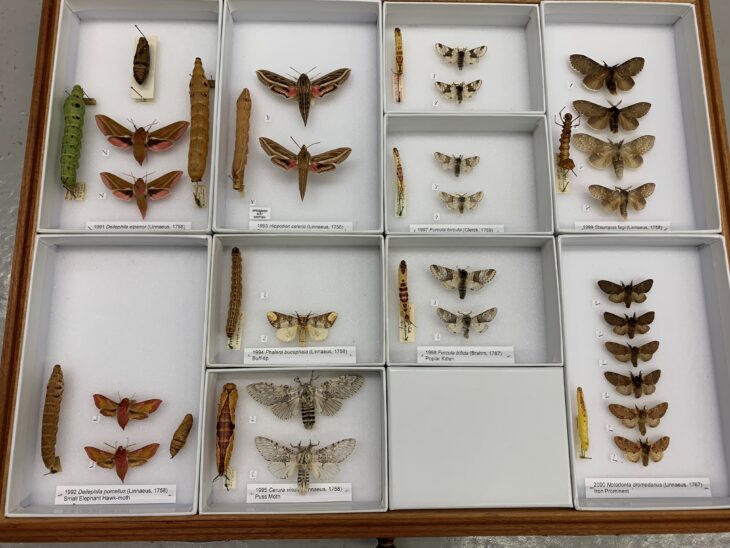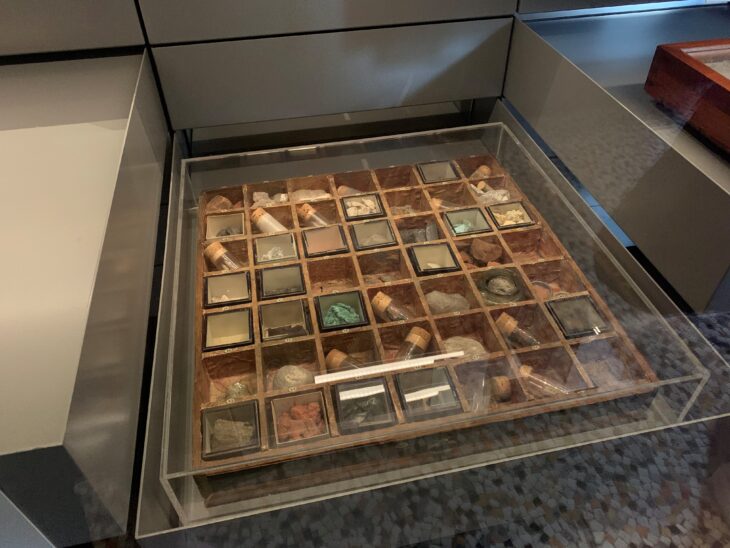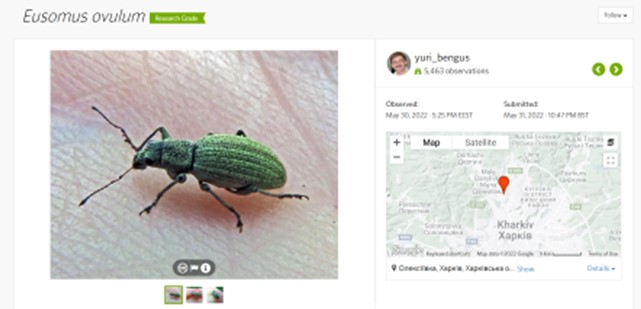Written by Lisa Chilton, NBN Trust Chief Executive Officer
Last week, I had a timely reminder of the incredible heritage of wildlife recording in the UK. The NBN Trust is privileged to hold its Board meetings at the Natural History Museum, London. What a perk! Whilst there, I took the opportunity to catch up with Steph Holt, the UK Biodiversity Training Manager, based in the Museum’s Angela Marmont Centre for UK Biodiversity. The Centre runs a free wildlife Identification and Advisory service, and visitors can use the reference collections, microscopes and photo-stacking equipment to identify and photograph their specimens. It’s a wonderful resource.
Steph kindly invited me on a behind-the-scenes tour of the Museum’s UK wildlife collections. Entering the stacks, I could barely contain my excitement. Drawer upon drawer upon drawer of exquisite treasures. Each specimen collected, prepared and presented with astonishing care and attention to detail.
A case of hawk moths, showing all their life stages, was a particular highlight. It’s mind-boggling to think of the work that must have gone into preparing each caterpillar: painstakingly blowing out its insides, drying it and pinning it in just the right position.

Another treat was revealed on opening a folder marked ‘War Damaged’. The Museum suffered severe damage from air raids during the Second World War. When a bomb hit the Herbarium, the heavy mahogany cabinets did a remarkable job of resisting fire damage. Some specimens were harmed, though, and the scorched paper on which they’re mounted only adds to their poignant beauty. The Museum still has the bomb (naturally) and sometimes puts it on public display.
Equally poignant was Steph’s explanation of the many statues and carvings that decorate the Museum, with extinct species in the east wing and living species in the west. Tellingly, while only one of the species depicted as extinct at the time of the Museum’s construction (the Coelacanth) is now known to be alive, rather more species depicted as living are now extinct.
The extravagance and beauty of the Museum itself, designed as a “cathedral to nature”, is mirrored in one especially intriguing exhibit. A case of specimens from Sir Hans Sloane – the seventeenth century doctor whose vast collections prompted the creation of the Museum – reveals, on close inspection, the glitter of gold. In an extraordinary act of showmanship, Sir Hans had the inside of each case coated with gold dust, which would have risen up and sparkled in the candlelight whenever the case was opened. This got me thinking about the modern-day, digital equivalent: how can we make the NBN Atlas ‘sparkle’ whenever someone opens its box of treasures?!

While we’re on the subject of wonders, and of extraordinary dedication to wildlife recording, I thought I’d mention Ukraine. The suffering of the Ukrainian people and the devastation of their cities is doubtless on all our minds. But, almost unbelievably, just as soldiers collected specimens from the frontline in the First World War, there are people still recording wildlife in Ukraine. You can see their observations on iNaturalist, where a special project for wartime records has been created. Since 24 February, almost 900 people have submitted records from Ukraine, totalling more than 37,000 observations. If ever there was testament to the human spirit, and to the restorative power of time in nature, this is it. I am deeply humbled.

